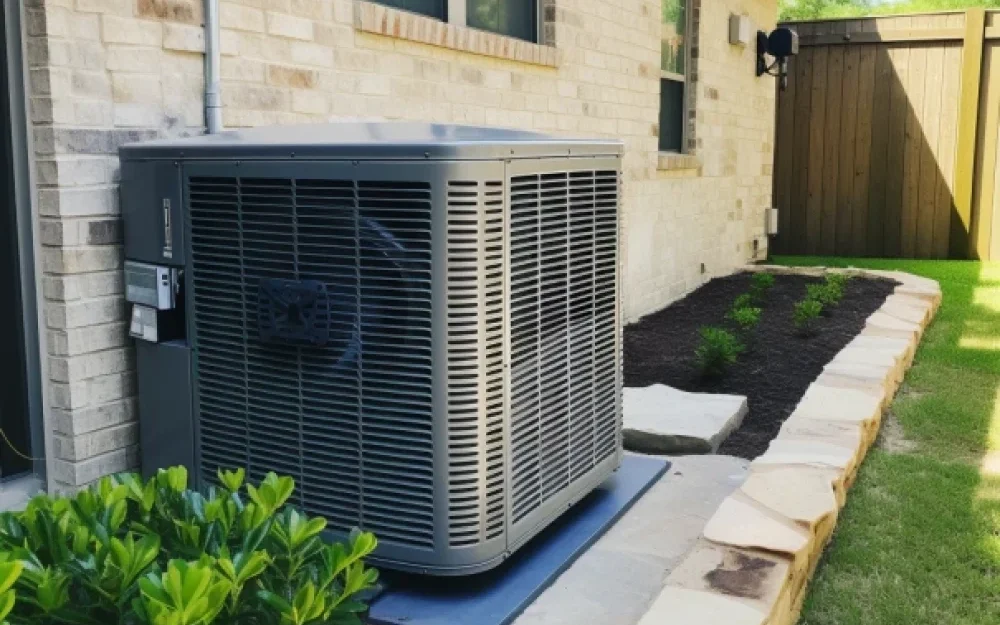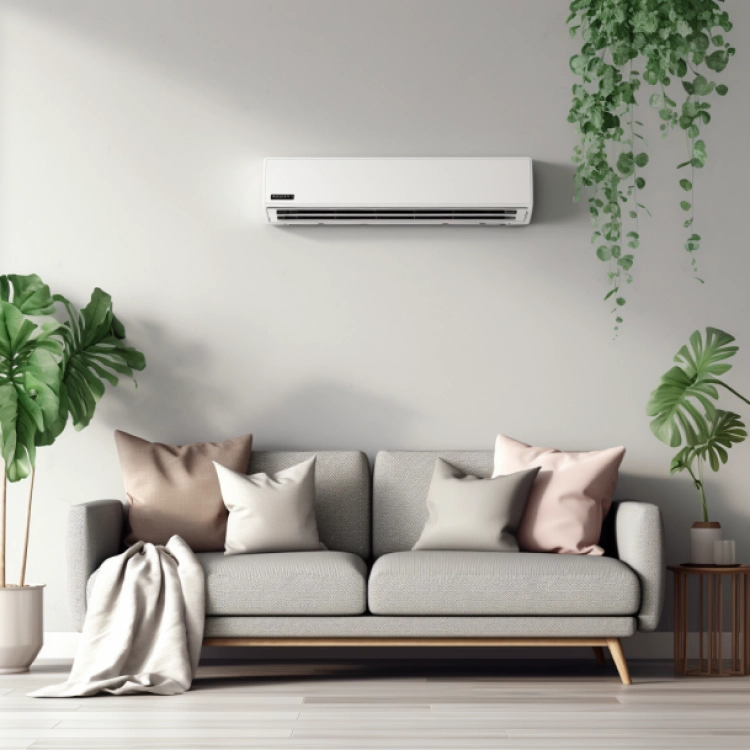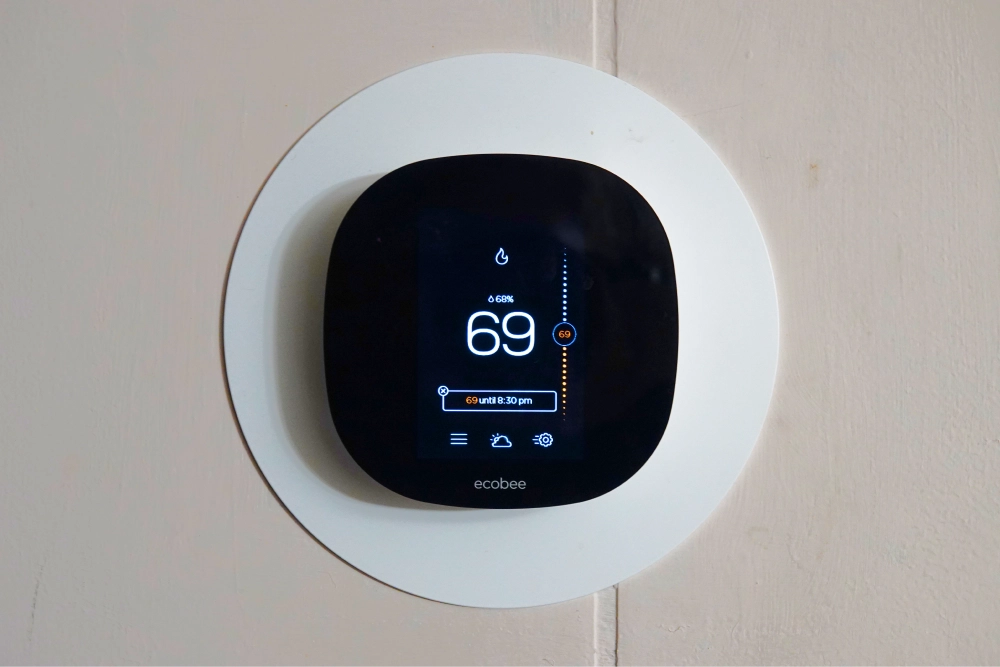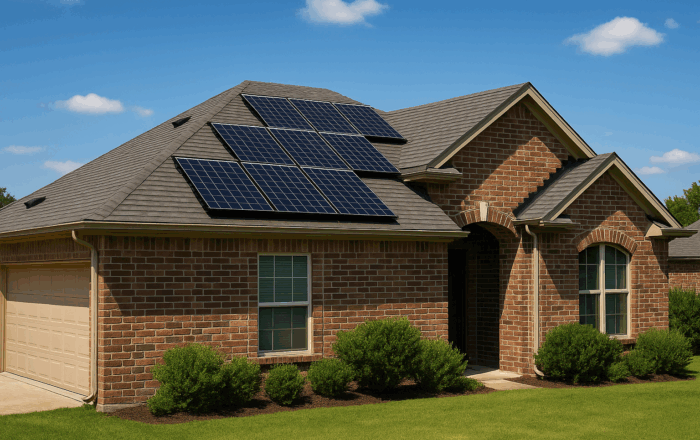Home Improvement Living in Texas
How Many Solar Panels Do You Need in Texas?
4 minute readHow to calculate the number of solar panels you need to power your Texas home
Home > BKV Energy Blog > All Posts > The Most Energy Efficient HVAC Systems
7 minute read • Last update July 2025

With a growing focus on efficiency, HVAC manufacturers are constantly innovating to offer top-quality, energy-saving solutions. In 2023, the spotlight shines on three star performers: heat pumps, high-efficiency furnaces, and advanced air conditioners.
These systems are leading the charge in energy efficiency, offering homeowners a way to keep their homes comfortable without sending their energy bills soaring.
Heat pumps play a dual role, providing heating in the winter and cooling in the summer. Like a chameleon changing its colors to suit its environment, a heat pump adjusts to meet your heating and cooling needs. Heat pumps typically have SEER ratings of 20-25.
There are several types of heat pumps – air-source, geothermal, ductless mini split, and absorption.
High-efficiency furnaces are the champions of efficient fuel usage. With an AFUE rating of 90% or higher, these furnaces convert the majority of their fuel into energy, minimizing losses.
Imagine being able to squeeze almost every last drop of energy from your fuel source. That’s what high-efficiency furnaces offer. And the reward? Lower energy consumption, resulting in energy savings, reduced energy bills, and a decreased environmental impact.
High-efficiency central air conditioners are a great option for those with larger homes because they are paired with ducts. During the summer, central air conditioners and heat pumps work identically – transferring heat from the indoors outside. But during the winter, if you have a central air system, you’ll rely on a furnace to keep your home warm. The most efficient central air systems typically have SEER ratings of around 20.
The most energy efficient HVAC system is likely the ductless mini split heat pump. Another answer would be: the system with the highest efficiency rating. But unfortunately, there is no simple answer to this question because every home is unique. The efficiency of an HVAC system is dependent on many factors:
All of these contributing factors and more should be considered when selecting an HVAC system.

Imagine a world where comfort doesn’t come at the expense of your wallet or the environment. That’s what energy efficient HVAC systems offer you. The term ‘energy efficiency’ here refers to the ability of a system to provide maximum comfort with minimal energy use. In other words, an efficient HVAC system is like a marathon runner – it conserves energy and lasts longer, leading to cost savings in the long run.
But how do we measure this efficiency? With SEER and EER ratings, the two primary measures of HVAC system. Think of them as report cards for your HVAC system, revealing how well your system uses energy to provide heat or cool air.
The Seasonal Energy Efficiency Ratio (SEER) rating measures the efficiency of an HVAC system over a cooling season, with higher numbers indicating increased efficiency. Picture it as a car’s miles per gallon (mpg) – the higher the mpg, the more efficient the car. Similarly, the higher the SEER rating, the more efficient the HVAC system.
To meet ENERGY STAR specifications, the minimum SEER rating is 14.5. In 2023, SEER ratings can reach as high as 28. A system with a 28 SEER rating would be incredibly energy efficient and could cool a home at a very low cost. If you live in Texas, a 26 SEER system would be incredibly beneficial, but a SEER rating of at least 17 would be a solid choice.
If your AC unit has a SEER rating lower than 14.5 it’s advisable to upgrade to ensure long-term cost savings.
Just as a snapshot captures a moment in time, the Energy Efficiency Ratio (EER) rating provides an assessment of the efficiency of an HVAC system at a given outdoor temperature, thus giving an indication of its performance. It’s like a snapshot of how your HVAC system performs under specific conditions.
The EER rating becomes a more significant factor than SEER if the climate is consistently hot and dry during the spring and fall. Systems that are most efficient are ranked at 13 EER or more.
When heaters are warming your warm, some of the fuel used turns into heat and some it goes unused, lost through various processes like exhaust.
Annual Fuel Utilization Efficiency (AFUE) is like a report card for your heater, showing how good it is at turning fuel into warmth. If your heater has a high AFUE, it’s really good at using most of the fuel to make your house warm, and only a little bit gets lost. So, if the AFUE is 85%, it means 85 out of 100 parts of the fuel become heat, and only 15 parts are lost.
The Heating Season Performance Factor (HSPF) measures the efficiency of a heat pump during winter, or the heating season. The higher the HSPF, the more efficient the system.
Choosing an energy-efficient HVAC system isn’t as simple as picking the one with the highest efficiency rating. The right system for your home depends on a variety of factors including home size and layout, climate and geography, and ENERGY STAR certification.
The size and layout of your home are like the canvas on which your HVAC system operates. Larger homes with complex layouts may require more energy to maintain a comfortable temperature compared to smaller, open-plan homes. Just like you wouldn’t try to fit a square peg into a round hole, you wouldn’t install an HVAC system that isn’t suited to your home’s size and layout. So, make sure to consider these factors when choosing your system.
Larger homes typically require ducted HVAC systems to maintain a comfortable temperature throughout the year. If you live in a smaller space or are renovating, a ductless mini split can often do the trick.
Climate and geography are like the weather and road conditions for your HVAC system’s journey. The performance and efficiency of your system depend heavily on these factors.
So, before you set off on your journey to energy efficiency, ensure you’ve taken into account the climate and geographical conditions of your location. Remember, the right system is one that’s tailored to your specific needs.
Heat pumps are a great solution because they function in both warm and cold weather. However, if your winters regularly drop below 30 degrees for extended periods of time, you may want to consider a high efficiency furnace to keep you warm.
ENERGY STAR certification is like a badge of honor for HVAC systems. It guarantees that the system meets strict energy efficiency guidelines set by the U.S. Environmental Protection Agency.
Choosing an ENERGY STAR certified system is like choosing a car with a five-star safety rating. It’s a decision that brings peace of mind knowing that you have a reliable and efficient system that’s been certified by a trusted authority.
Once you’ve chosen the right energy-efficient HVAC system for your home, the journey doesn’t end there. There are additional steps you can take to maximize your system’s energy efficiency, including proper installation, regular maintenance, and smart thermostats.
Think of these steps as the tune-up for your HVAC system, helping it run smoothly and efficiently for years to come.

Proper installation and ductwork are like the solid foundation for your HVAC system. Without them, the system’s performance can be significantly impacted. So, ensure your HVAC components are installed correctly and that your ductwork is sealed to prevent air leakage. Remember, a well-built foundation is key to a strong and efficient system.
Regular maintenance and filter replacement are like the oil change and tire rotation for your HVAC system. They help maintain the system’s efficiency and prevent costly repairs down the line.
So don’t neglect your HVAC system. Schedule regular check-ups and replace filters as needed to keep it running smoothly and efficiently.
Smart thermostats and zoning systems are like the GPS for your HVAC system. They provide better control over temperature settings, leading to energy savings. Utilize smart thermostats and zoning systems to customize your home’s temperature settings and maximize your system’s energy efficiency.
Even high efficiency HVAC systems can use the assistance of a ceiling fan or a portable fan to help lower your energy bill. Utilizing a fan can help lower the feel of the air around by 4 degrees. This allows you to set your thermostat a bit higher in the summer, increasing your electricity savings.
When considering energy efficiency, understanding the basic components and functions of HVAC is the first step towards making an informed decision.
An HVAC system is composed of several integral components, each playing a distinct role in ensuring optimal indoor comfort.
The furnace, often powered by gas, oil, or electricity, heats the air that is distributed throughout the home.
The air conditioner cools the air by removing heat and moisture, and it’s typically located outside the residence.
The evaporator coil, found inside or near the furnace, aids in cooling the air as it passes through.
The thermostat acts as the control hub, allowing users to set desired temperatures and regulate the system’s operation.
Ductwork serves as the transportation system for conditioned air, ensuring it reaches every corner of the home.
Lastly, vents allow the conditioned air to enter rooms, while air filters work to purify the air by trapping dust, allergens, and other contaminants.
Together, these components work in harmony to maintain a comfortable and healthy indoor environment.

Rebates and incentives are like the cherry on top of the energy-efficient HVAC system cake. They can sweeten the deal by helping homeowners save on upfront costs and long-term energy bills.
So, before you make your purchase, check out the available rebates and incentives or homeowner tax credits for energy-efficient HVAC systems. They might just make your decision a lot easier.
Graham Lumley, Digital Marketing Manager at BKV Energy, leads digital and traditional marketing strategies, focusing on educating Texans about the state's deregulated energy market. With over 8 years of marketing experience, he creates content to help consumers understand and save on their energy bills, bringing a fresh and dynamic approach to the industry.

Home Improvement Living in Texas
How to calculate the number of solar panels you need to power your Texas home

Gardening in Texas presents unique challenges. Long, hot summers and frequent droughts mean that traditional landscaping often requires significant water
Get $50 off your electric bill!
Use code BKVEJOINUS50
Enter your zip code to shop BKV Energy's affordable, fixed-rate Texas electricity plans. Use the promo code for $50 off your electric bill.